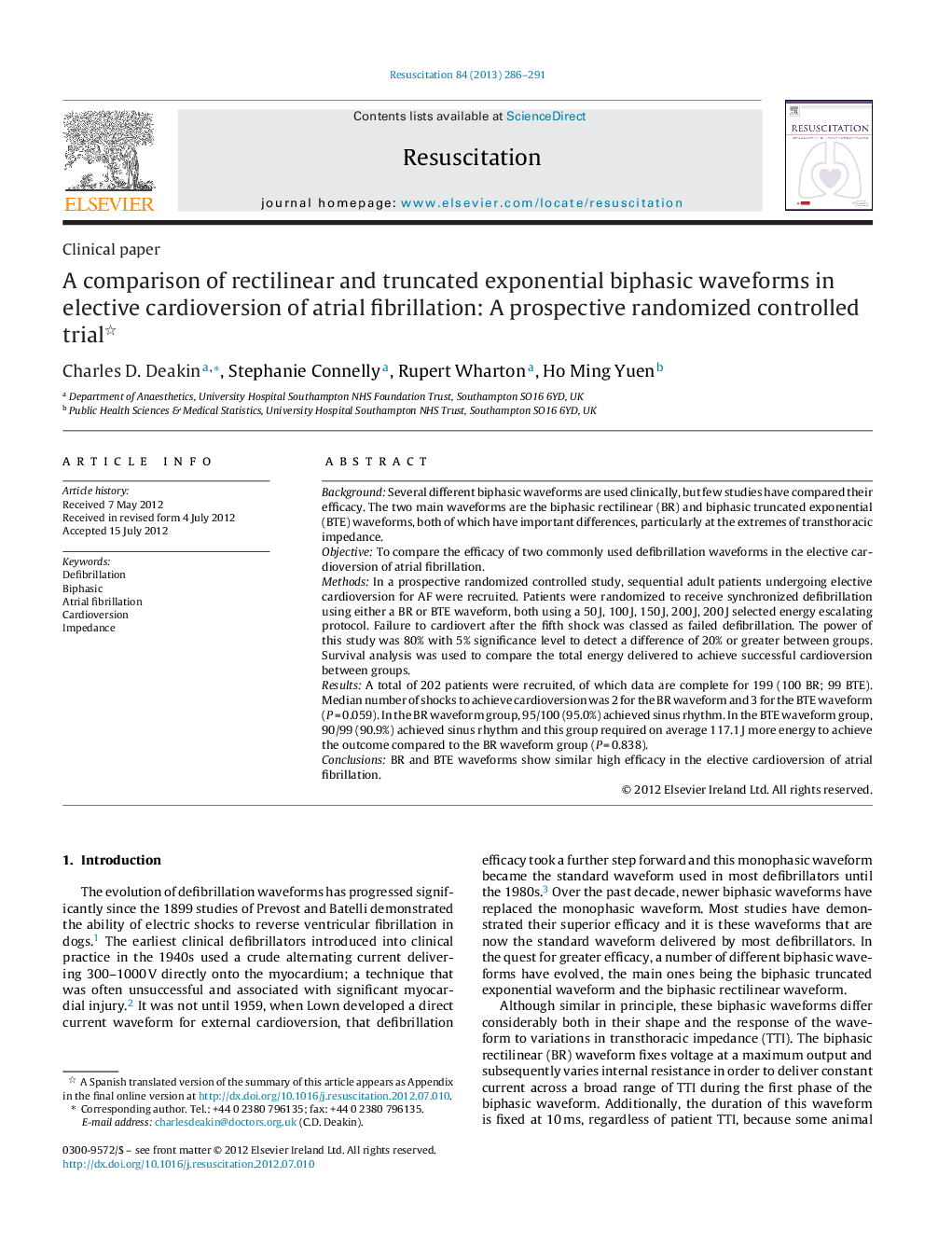| کد مقاله | کد نشریه | سال انتشار | مقاله انگلیسی | نسخه تمام متن |
|---|---|---|---|---|
| 3008769 | 1181465 | 2013 | 6 صفحه PDF | دانلود رایگان |

BackgroundSeveral different biphasic waveforms are used clinically, but few studies have compared their efficacy. The two main waveforms are the biphasic rectilinear (BR) and biphasic truncated exponential (BTE) waveforms, both of which have important differences, particularly at the extremes of transthoracic impedance.ObjectiveTo compare the efficacy of two commonly used defibrillation waveforms in the elective cardioversion of atrial fibrillation.MethodsIn a prospective randomized controlled study, sequential adult patients undergoing elective cardioversion for AF were recruited. Patients were randomized to receive synchronized defibrillation using either a BR or BTE waveform, both using a 50 J, 100 J, 150 J, 200 J, 200 J selected energy escalating protocol. Failure to cardiovert after the fifth shock was classed as failed defibrillation. The power of this study was 80% with 5% significance level to detect a difference of 20% or greater between groups. Survival analysis was used to compare the total energy delivered to achieve successful cardioversion between groups.ResultsA total of 202 patients were recruited, of which data are complete for 199 (100 BR; 99 BTE). Median number of shocks to achieve cardioversion was 2 for the BR waveform and 3 for the BTE waveform (P = 0.059). In the BR waveform group, 95/100 (95.0%) achieved sinus rhythm. In the BTE waveform group, 90/99 (90.9%) achieved sinus rhythm and this group required on average 117.1 J more energy to achieve the outcome compared to the BR waveform group (P = 0.838).ConclusionsBR and BTE waveforms show similar high efficacy in the elective cardioversion of atrial fibrillation.
Journal: Resuscitation - Volume 84, Issue 3, March 2013, Pages 286–291